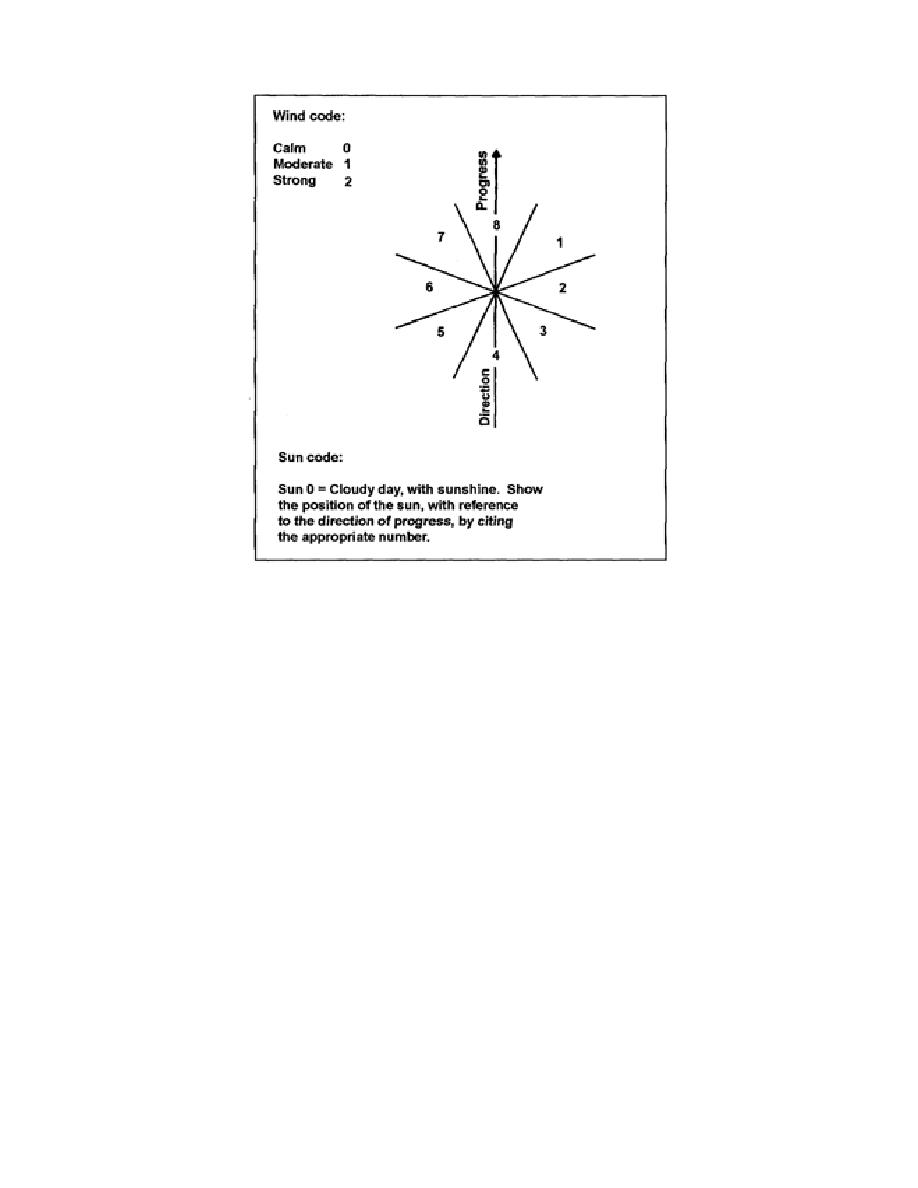
Figure 4-8. Sun and Wind Code
(5) The temperature, to the nearest degree centigrade as shown by the rod thermometer, is read
and recorded for the rod coming up from the first backsight at the beginning of each section (as long as
the leveling is continuous). When leveling is interrupted for a considerable length of time, make an
additional temperature reading and record it at the end of the continuous leveling. If the interruption
occurs during the running of a section, read and record the temperature when the leveling is resumed. If
the thermometer readings of the two rods differ, record the number and readings of both rods, beginning
with the rod in the backsight position.
(6) The maximum length of sight is 75 meters, and this length is used only under the most
favorable conditions. The length of sight should be kept as long as possible and still stay within closure
limits. Short lines of sight require additional setups and slow progress, but long sight lines increase
closure errors and require reruns. A convenient rule to remember when fixing the length of a sight is to
shorten the sights when difficulty is encountered in keeping the upper and lower intervals subtended on
the rod within 0.003 meter.
(7) The difference in length between the foresight and the backsight distances at any instrument
station must not exceed 10 meters. The continuous sum of these distances must not differ by more than
20 meters for any section or at any tie point. Lines of sight should be close enough in length so that it is
not necessary to refocus between the two sights of an instrument station. Errors due to imperfect level
adjustment can be nearly eliminated if the lengths of the foresight and the backsight of each section are
nearly equal.
EN0593
4-18



 Previous Page
Previous Page
